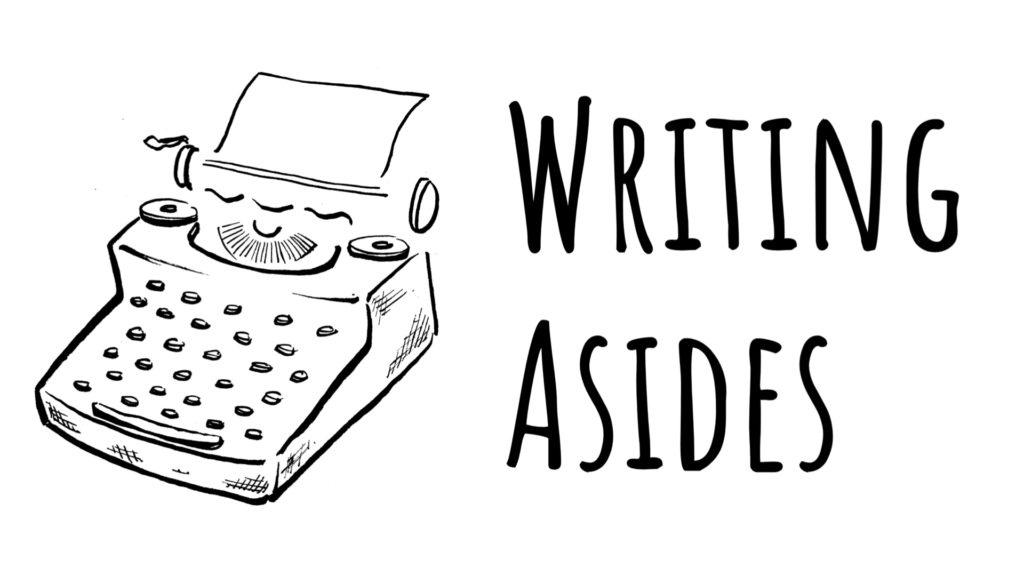Keyboards & Haptics.
(Many years ago, I was interviewing a CEO so I could ghost write his annual report message. He explained that their strategy was to “leverage their core competency to maximize their operational return.” I said, you mean you’re going to “do what you do best to make money?” He was not amused. But I was.)
At some point when I wasn’t looking, the clunky, consonant-riddled word “haptic”—which has nothing to do with being happy or ticks—started appearing in System Settings for phones and computers. It’s a word that only a linguistically passive-aggressive techno-geek could love. The kind of word that people make up when they want to convince people that they are thinking or doing something important. Like “pivot,” “leverage,” or “core competency.”

(Many years ago, I was interviewing a CEO so I could ghostwrite his annual report. He explained that the company’s strategy was to “leverage their core competencies to maximize their operational return.” I said, you mean you’re going to do what you do best to make money? He was not amused. But I was.)
My adventures in “haptic-ing” [definition at the end] began when I was given a Smith Corona Electric typewriter by my parents on my Bar Mitzvah. The symbolism of getting it on the day I allegedly “became a man” doesn’t escape me.
The second most important gift I got that day was a touch-typing course that consisted of several 33-rpm records and a manual. “A,” the record would say. “A” “A” “A” “A”… I could have obeyed its commands all day. And, for many days I did until I could type 30, 40, and eventually 70-80 words a minute. But the real accomplishment wasn’t speed; it was discovering that I could have a direct connection between my brain and fingertips. From then on, while the words might not always come easily, the actual “writing” could be seamless—without the distractions of pencil sharpening, left-handed smudging, and trying to write in a straight line. All I had to do was change the ribbon once in a while and use a pin to pick out the ink that had hardened inside the o’s, p’s, and d’s. Since then, I’ve worked at a keyboard virtually every day. Let’s call it ±55 years. 350 days a year. Maybe two hours a day. That’s 38,500 hours. Say I’m typing a leisurely 50 words a minute. If my math is right, that’s more than 2 million minutes at the keyboard and more than 1 billion words. Give or take a few million.
Of course, I’ve erased a lot of those words: first with a nice soft pink eraser on “Corassable Bond.” Then with Liquid Paper, Ko-Rec-Type, and the ribbons that were black on top and Ko-Rec-Type below. “Delete,” “Command + X,” and “Command + Z” may be faster and cleaner but they don’t force you to make the same commitment to every word that a typewriter does.
We had a manual typewriter in the house when I was little—an Olivetti or Smith Corona. All I remember about it is banging on the keys to see how many you could jam up at the platen before your parents told you to stop.
The first typewriter I ever used for its intended purpose was my dad’s Smith-Corona Electric. He said it was the very first one. Which I took to mean first on the planet, although he meant in terms of model years. I liked this machine. In fact, at some point, while I was in college, I traded him that Bar Mitzvah typewriter for it. Not only could you watch the action like on a manual, but it also had the old-fashioned manual return. The very way you hit that lever and threw the carriage back told volumes about who you were—as a person as well as a writer.
By then, the pinnacle of typewriter technology was the IBM Selectric. They were way too expensive for me at the time, but somehow I got a hand-me-down in the late ‘70s. The only problem was that watching the ball spin around was much more interesting than writing. More problematically, it let writers change typefaces—beginning the process, which has only escalated exponentially since then, of being able to distract ourselves from the work at hand by screwing around with formats.
My first real foray into computers was in January 1984. The keyboards weren’t all that different from the ones on electric typewriters. But the change, from looking at the paper on a platen to looking at a screen, short-circuited the critical brain-fingers-words feedback loop that had subconsciously become a core component of my writing process.
Fortunately, once I got used to it, the quieter and more sensitive computer keyboards made that loop even more seamless—although the need to use a mouse (back then) and eventually a trackpad took some haptical getting used to. I still prefer trackpads because it’s easier to keep one hand positioned correctly on the keyboard as I’ve been doing, well, since my Bar Mitzvah…
Which brings us, at last, to the definition of “haptic”: a technology that uses touch to control and interact with computers. (If it sounds Greek to you, it’s probably because it’s derived from the Greek haptesthai, meaning “to touch.”)
I’ll probably always refer to “touch and feel” rather than haptic. It doesn’t matter. No matter how sophisticated the technology gets, the real miracle is that we can put our thoughts into words—and, at our best, throw our hearts into it.

